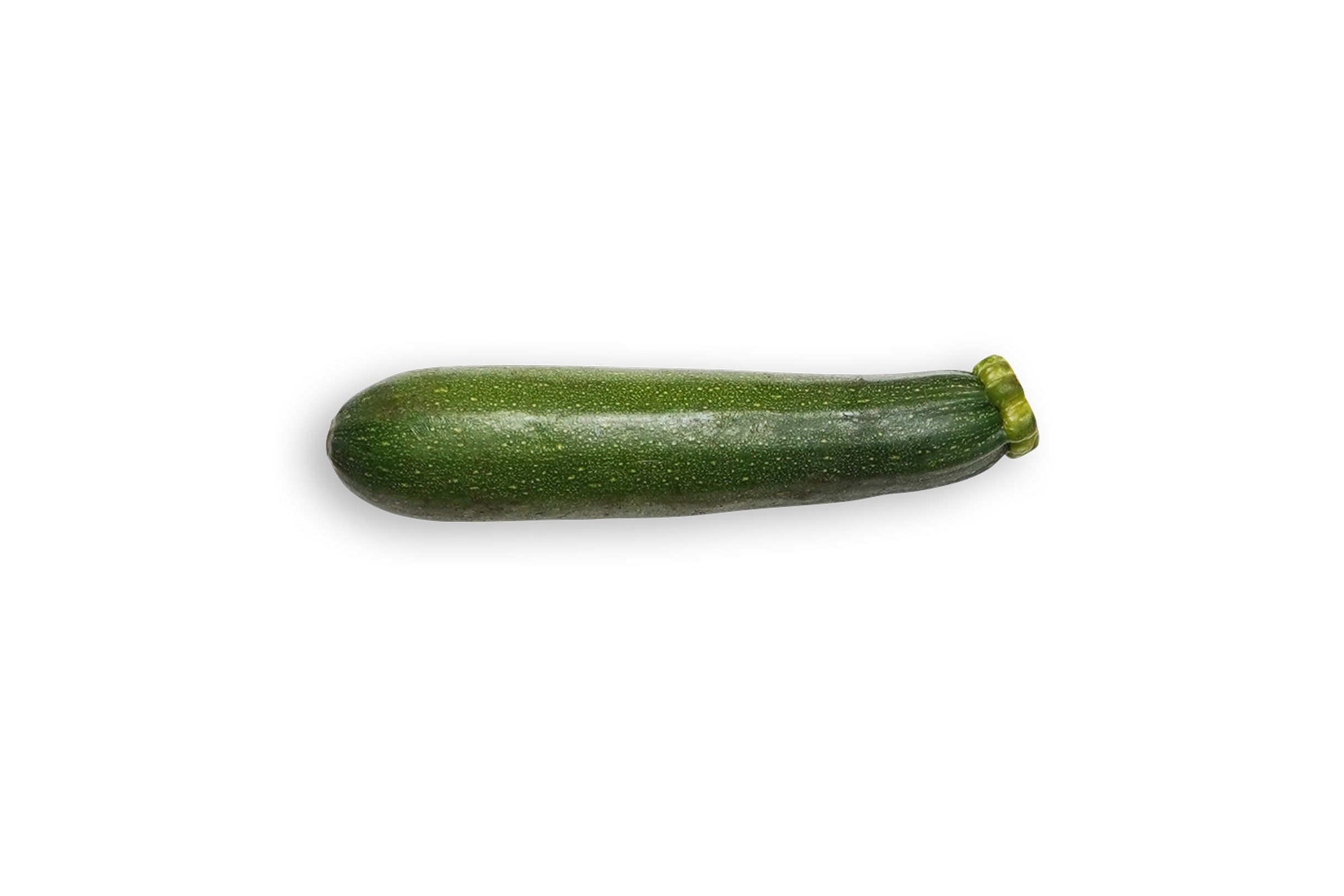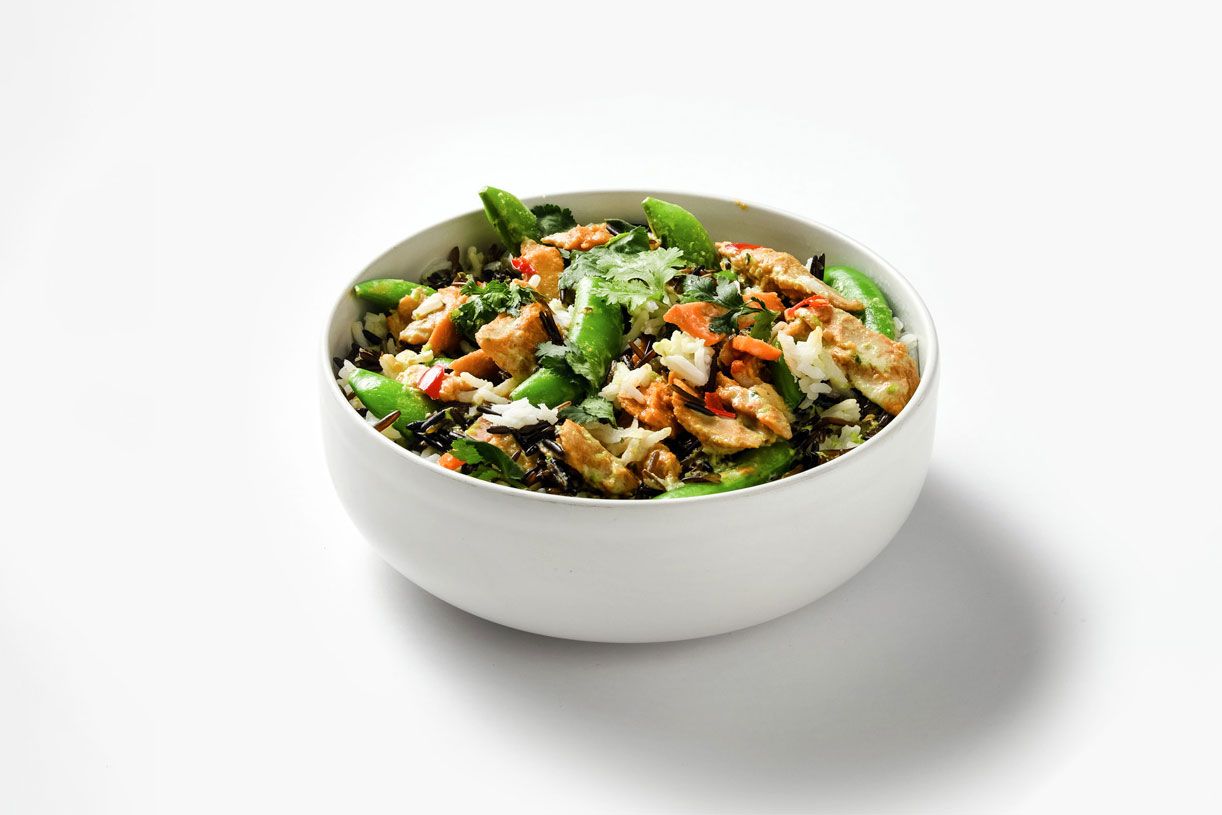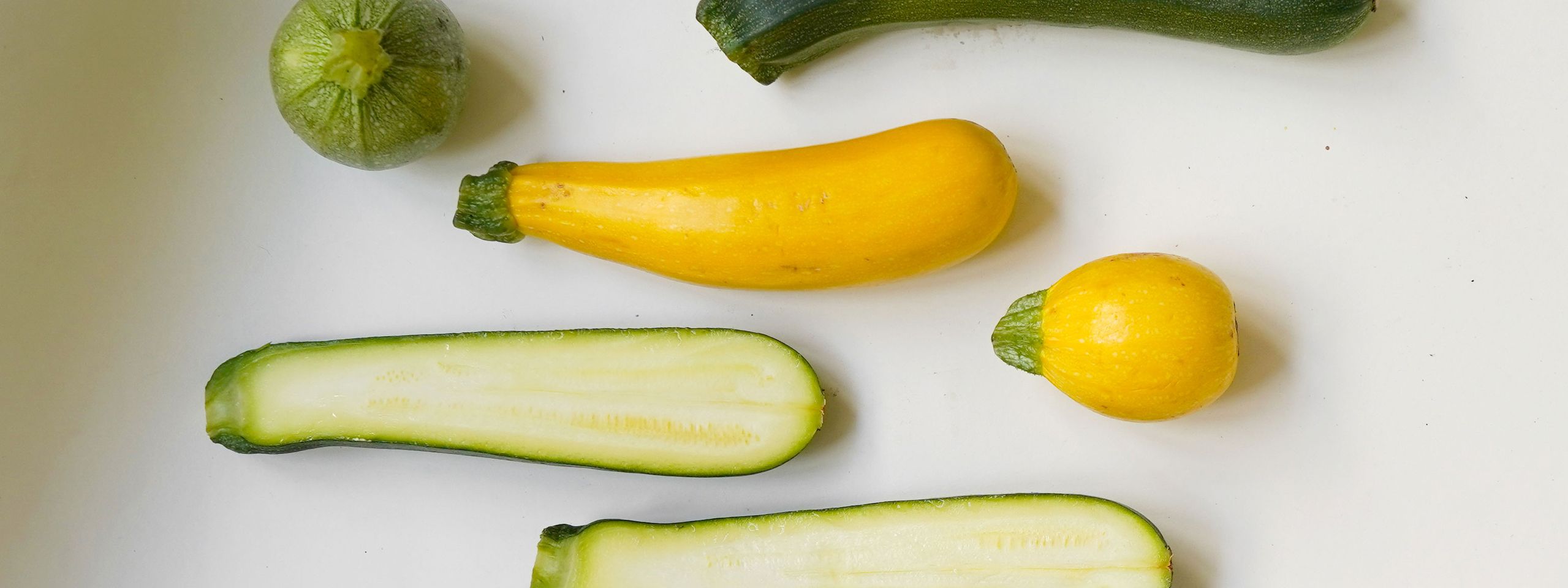Zucchini
The Italian favourite
Intro
Zucchini has a mild, pleasant flavour and therefore incredibly versatile. It’s a popular ingredient used in cuisines around the world. The zucchini flower is also edible and a popular restaurant delicacy.

What are zucchini?
Zucchini, also known as courgette, is a summer squash and therefore belongs to the pumpkin family. Zucchini can grow up to 1 meter long, but are typically harvested between 15-25cm.

Where does Zucchini come from?
Zucchini was discovered in the 16th century in the Americas, but wasn’t introduced in the form we know today until the 19th century. It was popularized in Italy, where the name Zucchini basically translates to small pumpkin.
Which varieties are there?
There are a variety of zucchinis, found in different sizes and colours. The most common is a zucchini in any shade of green and golden zucchini are typically found in golden, yellow or orange tones.
Here an overview of different zucchini types:
Green or Bush Zucchini
These are distinct by their deep green colour and the most common. Green zucchini are often harvested at a small size (about 10cm) to preserve their crisp flavour.
Yellow Zucchini
Very similar in taste and texture to the green zucchini, but the yellow zucchini impresses with its bold colour.
Green-White Zucchini
Lighter in colour with a nutty, sweet taste. It is less slim and round than its counterparts and typically around 10cm in length.
When are zucchini in season?
Zucchinis are typically in season in July and August
Our tips for enjoying zucchini:
Zucchini is a very versatile ingredient that can be transformed into a variety of dishes. From salads, to casseroles to pasta all the way to dessert – zucchini can do it all. Zoodles as a low-carb pasta alternative, or as the star ingredient in zucchini bread, there are countless ways in which you can use this vegetable. For classic cooking techniques, it also allows for flexibility. You can eat zucchini raw, steamed, grilled, baked or fried.
Zucchini Nutrition Facts per 100g:
| Typical Values | 100g |
|---|---|
| Calories | 19 |
| Fat | 0.4g |
| Carbohydrates | 3.1g |
| Fibre | 1g |
| Sugar | 2.5g |
| Protein | 1.5g |
Nutrients found in Zucchini:
Vitamins:
Vitamin C
Minerals:
Manganese, Potassium and Magnesium

